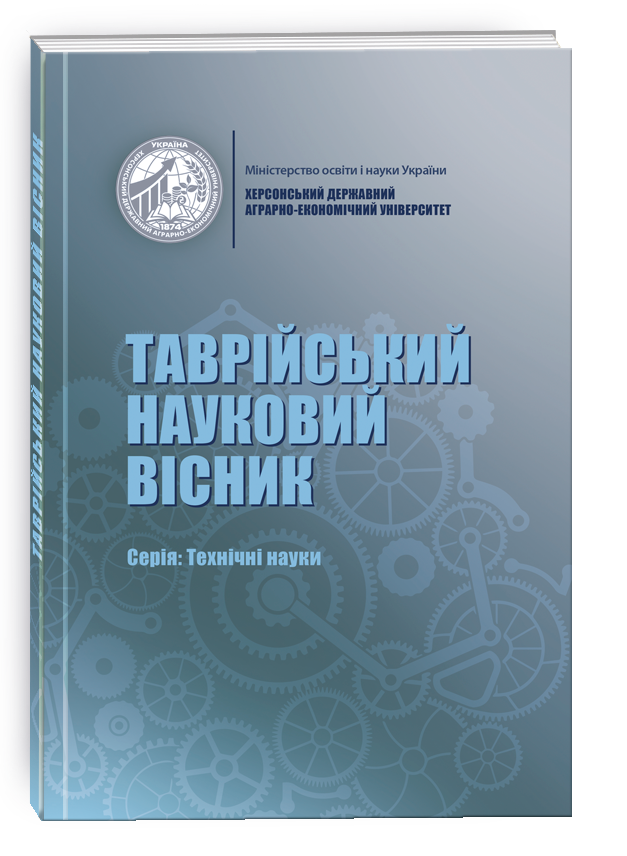SURFACE ROUGHNESS AS ONE OF THE MAIN GEOMETRIC CHARACTERISTICS OF THE SURFACE DETAILS. METHODS AND MEANS OF CONTROL
DOI:
https://doi.org/10.32851/tnv-tech.2022.5.2Keywords:
roughness, contact methods, profilometer, profilograph, non-contact methods, surface, qualityAbstract
Any surface of the part, even carefully processed, cannot be completely perfectly flat. The value of the smoothness and flatness of the surface of the part in any case will differ from the value specified by the drawing, that is, from the nominal value. In this case, the deviation can be either macrogeometric or microgeometric. Macro geometric deviations can be characterized by the waviness of the part and the inconsistency of the shape. Microgeometric deviations, in turn, are determined by nothing other than the roughness of the surface. Surface roughness is a characteristic of irregularities expressed in numerical dimensions and indicates the degree of their deviation along the base length from theoretically smooth surfaces of a given geometric shape. In other words, it is a set of micro-irregularities that appear on the surface of finished parts after processing. It should be noted that it is the roughness that has the strongest impact on the performance characteristics of products, as well as parts and assemblies for various purposes. Perhaps that is why the exact determination of the roughness parameter is one of the most important tasks in metrology. There are many methods for determining the degree of roughness. Some tools and methods are practically no longer used due to the advent of more modern tools that can increase the accuracy of measurements and reduce the likelihood of error. The choice depends on how high the accuracy of the measurements should be. The article offers an overview of modern methods and devices for research and control of surface roughness of parts. The influence of roughness on the performance of parts is considered in detail. It has been determined that for the manufacture of high-quality and reliable products it is necessary to carry out mandatory control of surface roughness. It is proved that the choice of methods and means of measuring roughness depends on the physical and mechanical properties of the materials of the parts, on their geometric dimensions and on the conditions of their application and operation.
References
Контроль і вимірювання шорсткості. URL: https://studfile.net/preview/5730200/page:8.
ДСТУ ISO 4287:2012 Технічні вимоги до геометрії виробів (GPS). Структура поверхні. Профільний метод. Терміни, визначення понять і параметри структури.
Засоби вимірювання шорсткості поверхні. URL: http://obrobka.pp.ua›646-zas.
ДСТУ ISO 10110-8:2018 (ISO 10110-8:2010, IDT) Оптика та оптичні прилади. Розроблення креслеників оптичних елементів та систем. Частина 8. Текстура поверхні, шорсткість і хвилястість. Терміни та визначення.
Альховик О.В. Сучасні методи та засоби контролю мікрогеометричних параметрів поверхонь деталей і виробів. Вчені записки ТНУ імені В.І. Вернадського. Серія: Технічні науки. Том 32(71) С. 30–34.
Сичевський В.С .Аналіз методів контролю шорсткості поверхні деталей [Електронний ресурс]. Режим доступу: https://ela.kpi.ua›handle.
«Вимірювання шорсткості поверхні, визначення параметрів шорсткості за профілограмою». URL: https://itm.kpi.ua/wp- content/uploads.
Зенкін М.А., Назаренко А.С. Сучасні оптичні методи контролю шорсткості відповідальних деталей машин. Вісник Інженерної академії України. 2014. № 2. С. 220–224.
Контроль шорсткості поверхні. URL: https://jak.bono.odessa.ua/articles/kontrol-shorstkosti-poverhni.php.
Метрологія, стандартизація та управління якістю. URL: https://buklib.net›books.
Вплив якості поверхні на експлуатаційні властивості деталей. URL: https://stud.com.ua›tehnika.






